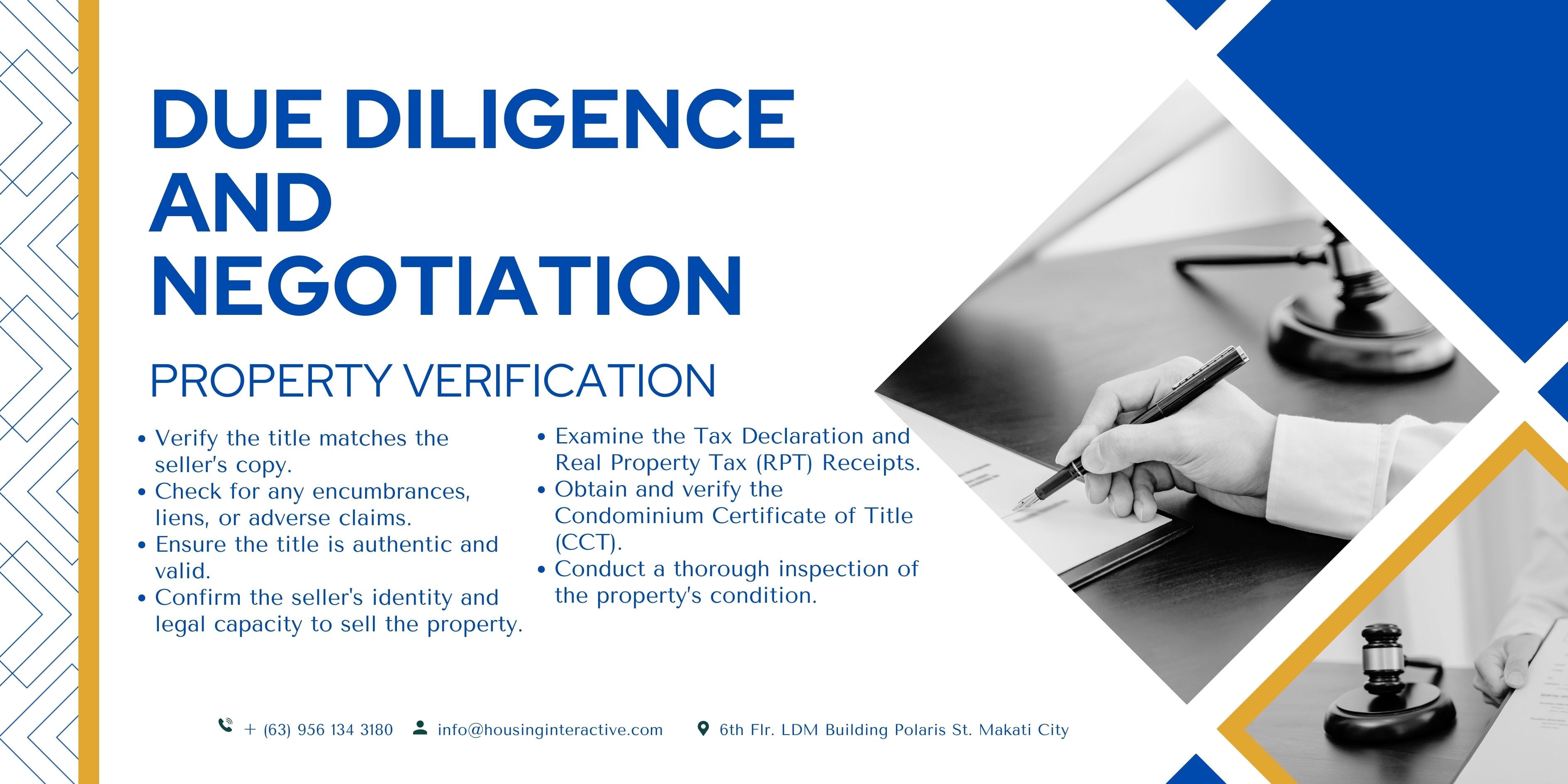Navigating the Finish Line
The excitement of having your offer accepted on your dream home or finding a buyer for your property is undeniable. You may already be planning furniture layouts or your next move. But before celebrating or handing over the keys, there’s one critical step left: reviewing the closing documents in the real estate closing process. Often seen as a complicated mix of paperwork and procedures, understanding this final phase is essential to ensure a smooth, hassle-free transaction.
Interested buyers should secure a mortgage pre-approval before entering the closing offer. This demonstrates their financial reliability and preparedness, giving them a competitive edge during negotiations and facilitating a smoother sales process for both the buyer and the seller.
So, what is the real estate closing process? It’s the final stage of the real estate selling process where legal ownership of the property transfers from the seller to the buyer. Funds are disbursed, documents are signed and recorded, and all contractual obligations are fulfilled. While it may seem overwhelming, breaking the process into clear, manageable steps will help you handle it confidently. This complete guide covers everything you need to know for closing day and beyond.
Who’s Who at the Closing Table? Your Key Players:
The real estate finalization phase involves a team of professionals working to complete your property transaction. Here’s a breakdown of the key individuals and entities you’ll encounter:
- The Buyer(s): As the purchaser, you’re responsible for securing financing, meeting all contractual obligations, reviewing and signing legal and financial documents, and providing the necessary funds to complete the home purchase.
- The Seller(s): As the current property owner, your role includes ensuring clear ownership (title), fulfilling agreed-upon contractual duties (like repairs), signing transfer documents, and receiving the sale proceeds.
- Real Estate Agents/Brokers: These licensed professionals act as your advocate and guide. Representing the seller or the buyer, they facilitate communication, manage paperwork, and ensure a smooth process. The buyer’s agent is crucial in negotiating repairs and coordinating the final walk-through to ensure all conditions are met before closing.
- The Mortgage Lender (if applicable): If you’re financing the purchase, the lender provides the mortgage funds, ensures loan terms are met, and works with escrow and title companies.
- The Title Company: They research the property’s history to confirm the seller has a clear, marketable title free of liens or claims. They also issue title insurance to protect the buyer and lender.
- The Appraiser (if applicable): Hired by the lender or buyer, the appraiser assesses the property’s market value to confirm the appropriate loan amount.
- The Home Inspector (if applicable): Usually hired by the buyer, the inspector checks the property’s condition and identifies any problems.
- Real Estate Attorneys: In some instances, attorneys provide legal counsel, review contracts, and ensure all legal aspects of the closing are handled correctly.
Getting it in Writing: Document Review and Signing
- Understanding the Paperwork: The closing agent will walk everyone through each document, including the crucial Closing Disclosure, the deed transferring ownership, and the mortgage documents (if applicable), ensuring clarity on what you’re signing. It is vital to gather and execute all the closing documents, such as the property deed, purchase agreement, and final utility readings, to ensure a smooth transfer of ownership and inform the buyer about the property’s details and condition before the sale is finalized.
- Double-Checking Details: All parties must thoroughly read and confirm the accuracy and completeness of each document before signing.
- Official Sign-Off: Documents must be signed correctly, often with a notary public present to verify identities and witness the signatures.
Show Me the Money: Funds Disbursement
- Buyer’s Payment: The closing agent will collect the certified funds from the buyer, typically a cashier’s check or wire transfer, ensuring secure payment. Additionally, the buyer provides earnest money as an initial deposit to demonstrate their seriousness and good faith to the seller.
- Distributing the Money: The closing agent then distributes these funds to the appropriate parties, including the seller, the lender (if applicable), and other service providers like real estate agents and the title company.
- Financial Records: The closing agent maintains meticulous records of all transactions for a transparent and accountable process.
The Step-by-Step Breakdown of the Real Estate Closing Procedure:
A. Buyer’s Due Diligence and Negotiation
Before finalizing a real estate purchase in the Philippines, a potential buyer undertakes due diligence to confirm the property’s legitimacy and the seller’s right to sell, which involves checking the title for issues, physically inspecting the property, and verifying tax payments. Obtaining mortgage pre-approval is crucial in demonstrating financial readiness and can aid negotiations. Concurrently, the buyer and seller negotiate terms like the price and payment schedule, sometimes using a Letter of Intent or a Reservation Agreement to express interest or secure the property. Additionally, the buyer’s agent is key in negotiating any necessary repairs and coordinating the final walk-through to ensure all conditions are met before the sale is completed.

1. Property Verification:
a. Obtain a Certified True Copy of the Title (Transfer Certificate of Title or Original Certificate of Title) from the Registry of Deeds.
- Verify the title matches the seller’s copy. This involves comparing the title document provided by the seller with the official copy from the Registry of Deeds to ensure consistency and identify any discrepancies.
| Best Practice: The buyer should get a certified true copy from the Registry of Deeds and compare details like the property owner’s name, property description, and any annotations with the seller’s document. |
- Check for any encumbrances, liens, or adverse claims. This means looking for any existing mortgages, unpaid debts, or legal disputes that could affect the property’s ownership. Ensuring a clear title during the real estate closing process is crucial as it signifies the absence of legal claims or liens on the property, facilitating a successful transfer of ownership.
| Best Practice: A title search at the Registry of Deeds might reveal a mortgage lien from a bank or a pending court case claiming ownership of the property. |
- Ensure the title is authentic and valid. This involves verifying that the title is not fake or forged and that it was issued by the proper authority.
| Best Practice: Checking for security features on the title document and confirming its issuance with the Registry of Deeds. |
b. Examine the Tax Declaration and Real Property Tax (RPT) Receipts.
- Confirm that tax payments are up to date. This means verifying that the seller has paid all required real estate taxes to the local government.
| Best Practice: Reviewing official receipts issued by the local treasurer’s office to confirm that all RPTs are paid. |
- Check for any tax delinquencies. This involves identifying any unpaid RPTs, which could become the buyer’s responsibility.
| Best Practice: Obtaining a tax clearance certificate from the local treasurer’s office ensures there are no outstanding tax obligations. |
- Verify the accuracy of the tax declaration. This means checking if the property details in the tax declaration, such as the land area and assessed value, are correct.
| Best Practice: Comparing the property description in the tax declaration with the title document and conducting an on-site home inspection to confirm its accuracy. |
c. For condominiums:
- Obtain and verify the Condominium Certificate of Title (CCT). A CCT is the title document for a condominium unit, separate from the title to the land where the building is located.
| Best Practice: Securing a copy of the CCT from the Registry of Deeds to verify ownership of the specific condo unit. |
- Review the condominium’s master deed and declaration of restrictions. These documents outline the rules, regulations, and restrictions governing the condominium, including ownership rights, common areas, and association rules.
| Best Practice: Examining the master deed to understand the unit owner’s rights and obligations, such as renovations or pet ownership restrictions. |
- Check for any unpaid association dues or assessments. This involves determining if the seller owes any outstanding monthly payments to the condominium association, which the buyer may inherit.
| Best Practice: Obtaining a certification from the condominium association management office regarding the seller’s payment status. |
2. Seller’s Authority:
- Confirm the seller’s identity and legal capacity to sell the property. This means verifying that the person selling the property is the actual owner and has the legal right to do so.
| Best Practice: Checking the seller’s government-issued IDs (driver’s license, passport) and comparing them with the name on the title document. |
- If the seller is a corporation, verify the person signing is duly authorized (Secretary’s Certificate, Board Resolution). If the seller is a company, this confirms that the individual signing the sale documents has the authority to represent the company.
| Best Practice: Obtaining a Secretary’s Certificate attesting to the Board Resolution that authorizes a specific officer to sell the property. |
- Check for marital status and spousal consent if the property is conjugal. In the Philippines, properties acquired during marriage are generally considered conjugal property, requiring both spouses’ consent for any sale.
| Best Practice: If the seller is married, check the marriage certificate and ensure that both spouses sign the Deed of Absolute Sale. |
3. Property Inspection:
- Conduct a thorough inspection of the property’s condition. This involves examining the physical state of the property, including any structures, fixtures, and fittings. Performing home inspections is a critical task that must be completed before the seller transfers the title deed to the buyer to avoid delays or nullification of the sale.
| Best Practice: Checking for any structural defects, water damage, or needed repairs. |
- Engage a professional inspector if necessary. For a more detailed assessment, especially for older properties or those with potential issues, a professional inspector can provide a comprehensive report.
| Best Practice: Hiring a licensed engineer to inspect the structural integrity of a house. |
4. Financial Arrangements:
- Secure financing (if applicable) through a bank, Pag-IBIG, or other means. If the buyer is not paying in cash, they need to obtain a loan from a financial institution.
| Best Practice: Applying for a housing loan from a bank and receiving a pre-approval letter. |
- Finalize loan approval and documentation. Completing all the necessary paperwork and meeting the lender’s requirements to get the loan approved.
| Best Practice: Signing the loan agreement and providing all documentation to the bank. |
- Determine the mode of payment. Deciding how the buyer will pay the seller (cash, check, bank transfer, etc.) and agreeing on the payment schedule.
| Best Practice: Agreeing to pay via a manager’s check or a series of bank transfers. |
B. Contract Preparation and Signing:
Once an agreement is reached, the buyer pays as scheduled and must obtain an official receipt as proof of payment, also clarifying any additional fees. It is crucial to understand the purchase agreement, which outlines the agreed-upon terms for the sale, including the price and closing date, ensuring all terms are accurately represented in the final paperwork. The transfer of ownership is formalized through a Deed of Absolute Sale (DOAS), which may be preceded by a Contract to Sell. The DOAS must be notarized by a notary public, with both parties presenting valid identification and providing proof of their legal capacity to complete the transaction, including corporate authorization when applicable.

1. Letter of Intent (LOI):
- Prepare the LOI if necessary to express the buyer’s interest and outline basic terms. An LOI is a preliminary document expressing the buyer’s intention to purchase the property and sets out the key terms of the proposed sale, such as the price and payment terms.
| Best Practice: A buyer submits an LOI to the seller, stating their interest in buying the property for a specific price, subject to assessment and the execution of a formal contract. |
2. Contract to Sell (CTS):
- Draft a Contract to Sell, especially for installment payments, outlining terms and conditions. A CTS is used when the buyer will pay the purchase price in installments. It specifies the terms of the installment payments, the conditions for the transfer of ownership, and the consequences of default.
| Best Practice: A buyer and seller enter into a CTS where the buyer agrees to pay a down payment and monthly installments for years, with the title remaining with the seller until full payment. |
3. Deed of Absolute Sale (DOAS):
a. Prepare the closing papers, including the Deed of Absolute Sale, which legally transfers ownership.
Ensure it contains:
| Identities of buyer and seller. The full legal names, addresses, and other identifying information of both parties involved in the transaction. |
| Best Practice: Including the buyer’s and seller’s names as they appear on their government-issued IDs. |
| Complete property description. A detailed description of the property, including its address, boundaries, lot size, and any improvements. |
| Best Practice: Providing the technical description of the property as stated in the Transfer Certificate of Title. |
| Purchase price and payment terms. The agreed-upon price for the property and how it will be paid (e.g., cash, installment). |
| Best Practice: Stating the total purchase price and specifying the amount of the down payment and the schedule of subsequent payments. |
| Date and place of execution. The date and location where the Deed of Absolute Sale is signed by both parties. |
| Best Practice: Indicating the city and date where the parties signed the document. |
| Warranties and representations. Assurances made by the seller about the property, such as their legal right to sell it and the absence of any encumbrances. |
| Best Practice: The seller warrants that they have the right to sell the property and that there are no outstanding liens or claims against it. |
| Tax responsibilities. Specifies which party is responsible for paying the various taxes associated with the sale, such as the Capital Gains Tax and the Documentary Stamp Tax. |
| Best Practice: A clause stating that the seller is responsible for paying the Capital Gains Tax, while the buyer pays the Documentary Stamp Tax. |
| Other special provisions to prevent future disputes. Any additional terms and conditions agreed upon by the parties address specific circumstances or prevent potential disagreements. |
| Best Practice: A provision specifying the date of property possession transfer or addressing the condition of fixtures and fittings. |
b. Review the contract carefully.
Have a real estate attorney review the contract to protect your interests. It is crucial to thoroughly read and understand all the terms and conditions of the real estate contract and Deed of Absolute Sale before signing. Consulting with a lawyer ensures that the contract is legally sound and protects the buyer’s and seller’s rights.
| Best Practice: The buyer hires a lawyer to review the DOAS to ensure that all terms are clear, that the buyer’s interests are protected, and that the contract complies with all applicable laws. |
c. Sign and notarize the Deed of Absolute Sale.
Notarization is crucial for the document to be legally binding and for registration. Both the buyer and the seller must sign the Deed of Absolute Sale to indicate their agreement to its terms. Notarization by a notary public verifies the authenticity of the signatures and makes the document legally binding.
| Best Practice: The buyer and seller sign the Deed of Absolute Sale in the presence of a notary public, who then acknowledges their signatures and affixes their seal to the document. |
C. Document Gathering:
For a smooth real estate deals in the Philippines, both the seller and buyer must provide essential documents: the seller typically needs to present proof of ownership like the land registration, title to property, and tax declarations, up-to-date tax payments, valid IDs, and a Special Power of Attorney if using a representative, along with potential additional documents for corporations or pre-selling properties; the buyer generally needs to provide valid IDs, their Tax Identification Number, a Marriage Certificate if applicable, a Special Power of Attorney if using a representative, a Buyer Information Sheet for pre-selling, their passport if a foreign buyer, proof of payment, and bank financing documents if applicable. It is crucial to securely handle all documents related to the real estate transaction, ensuring they are held in an escrow account until the sale is finalized and kept safe after closing to protect the buyer’s investment.

1. Essential Documents:
| Original and photocopies of valid government-issued IDs of both parties. These are required to verify the identity of the buyer and seller. |
| Best Practice: Driver’s licenses, passports, or other government-issued IDs. |
| Original Owner’s Duplicate Certificate of Title (TCT or OCT). This is the seller’s copy of the title document, which needs to be surrendered for the title transfer. |
| Best Practice: The seller provides the original TCT to the buyer. |
| Latest Tax Declaration for the land and improvements. This document from the local assessor’s office shows the assessed value of the property for tax purposes. |
| Best Practice: A copy of the most recent Tax Declaration issued by the city or municipal assessor’s office. |
| Latest Real Property Tax receipts. These are proof that the seller has paid all due real estate taxes. |
| Best Practice: Official receipts from the local treasurer’s office showing the payment of RPTs. |
2. Additional Documents (as applicable):
| Condominium Certificate of Title (CCT), if applicable. If the property is a condominium unit. |
| Best Practice: The CCT for the specific condo unit being sold. |
| Special Power of Attorney (SPA), if a party is represented. If the buyer or seller is not directly involved in the transaction and has authorized someone to represent them. |
| Best Practice: An SPA authorizing an agent to sign the Deed of Absolute Sale on behalf of the seller. |
| Marriage Certificate (if applicable). To verify the marital status of the seller and ensure spousal consent for the sale of conjugal property. |
| Best Practice: A copy of the seller’s marriage certificate. |
| Birth Certificate (if applicable). It may be required in certain situations, such as when proving heirship in the sale of inherited property. |
| Best Practice: A copy of the seller’s birth certificate. |
| Secretary’s Certificate and Board Resolution (if a corporation is involved). To prove the authority of the corporate representative to sell the property. |
| Best Practice: A Secretary’s Certificate attesting to the Board Resolution authorizing the sale. |
| Tax Clearance. A certification from the local government that the seller has paid all real estate taxes. |
| Best Practice: A tax clearance certificate from the city or municipal treasurer’s office. |
| Homeowners Association (HOA) clearance, if applicable. If the property is located in a subdivision or condominium with an HOA. |
| Best Practice: A certification from the HOA that the seller has paid all dues and assessments. |
An open communication between the buyer, seller, and their respective agents or attorneys is crucial throughout the pre-closing phase. This ensures that any issues discovered during assessment and verification, such as title defects or unpaid taxes, are addressed promptly to avoid delays at closing. Buyers should also keep a closing checklist to track all critical tasks and documents, helping to ensure nothing is overlooked.
Moreover, buyers should be aware of potential closing costs associated with the transaction, such as processing fees, escrow account deposits, and title insurance policy premiums. Understanding these costs early aids financial planning and prevents surprises during the closing day.
Finally, obtaining a thorough title search and reviewing the title report carefully can help uncover any title defects or liens that could jeopardize the property’s legal ownership transfer. Resolving all the paperwork issues before closing is essential for a smooth closing process and to protect the buyer’s investment.
Taxes and Fees in Real Estate Transactions
1. Tax Obligations: Understanding and Paying Capital Gains Tax (CGT), Documentary Stamp Tax (DST), and Local Transfer Tax
Paying the necessary taxes is a key part of the real estate closing process.
Capital Gains Tax (CGT) or Creditable Withholding Tax (CWT).
The seller usually pays the Capital Gains Tax (CGT), which is 6% of the selling price or zonal value, whichever is higher. In some cases, such as developer sales, this cost may be included in the price or passed to the buyer, depending on the contract. The Bureau of Internal Revenue (BIR) requires CGT payment within 30 days of notarizing the Deed of Absolute Sale. If the seller is a real estate business, a Creditable Withholding Tax (CWT) may apply instead, with rates varying by seller type and price. To comply, the seller must submit the notarized Deed of Sale, the appropriate BIR form (Form 1706 for CGT or Form 1606 for CWT), and supporting documents to the BIR.
Documentary Stamp Tax (DST)
The Documentary Stamp Tax (DST), usually 1.5% of the selling price or zonal value (whichever is higher), is typically paid by the buyer unless the contract states otherwise. This tax must be settled within five days after the month the deed was notarized by filing BIR Form 2000-OT.
Local Transfer Tax
Local government units (LGUs) impose a transfer tax on real estate sales, usually up to 0.75% of the purchase price or fair market value, depending on the city or municipality. In provinces, the rate is typically up to 0.5%. This tax is generally paid by the buyer unless otherwise agreed. Payment must be made before registering the title with the Registry of Deeds, often within 60 days of signing the Deed of Absolute Sale (DOAS) or receiving the Certificate Authorizing Registration (CAR).
2. Registration Fees at the Registry of Deeds
Registration fees are charged by the Registry of Deeds for the registration of the Deed of Sale and the issuance of a new title. These fees are calculated on a sliding scale based on the property’s value, approximately 0.25%, but specific rates can vary. The buyer typically pays these fees upon filing for registration.
3. Notarial Fees
Notarial fees are incurred for the notarization of the Deed of Absolute Sale. The rate can range from 0.1% to 2% of the property value or a fixed amount, and the responsibility for payment is often negotiated between the buyer and seller.
4. Other Potential Costs
Beyond the main taxes and fees, other costs may arise during the closing process. These can include agents’ commissions, typically paid by the seller, administrative fees, association dues for properties in communities, legal fees if a lawyer is engaged, title insurance, homeowner’s association fees, processing fees for title transfer services, and moving expenses.
Summary of Real Estate Closing Taxes and Fees
| Tax/Fee | Typical Payer | Rate | Deadline |
| Capital Gains Tax (CGT) | Seller | 6% of the higher of the selling price or the zonal value | Within 30 days from the notarization of DOAS |
| Creditable Withholding Tax (CWT) | Seller | 1.5% to 6% of the selling price, zonal value, or FMV (depending) | Within 30 days from the notarization of DOAS |
| Documentary Stamp Tax (DST) | Buyer | 1.5% of the higher of the selling price or the zonal value | Within 5 days after the end of the month of notarization of DOAS |
| Local Transfer Tax | Buyer | 0.5% – 0.75% of the higher of the selling price or the fair market value | Varies by LGU, often before title registration |
| Registration Fees | Buyer | Approx. 0.25% of property value (sliding scale) | Upon filing for registration at the Registry of Deeds |
| Notarial Fees | Negotiable | 0.1% – 2% of property value or flat rate | Upon notarization of the Deed of Absolute Sale |
Securing the BIR Clearance: Obtaining the Certificate Authorizing Registration (CAR)
After paying the CGT (or CWT) and DST, the BIR reviews the documents and issues a Certificate Authorizing Registration (CAR) or electronic CAR (eCAR). This certificate confirms that all transfer taxes have been paid and is required by the Registry of Deeds to proceed with the title transfer. It is crucial to prepare a series of important documents before closing a transaction to ensure a smooth process. Processing times vary based on document completeness and the BIR office’s workload.
Title Transfer: Registering the Property with the Registry of Deeds
With the CAR/eCAR, the buyer goes to the Registry of Deeds to register the property in their name. They must submit the original notarized Deed of Sale, proof of local transfer tax payment, and other required documents. The property deed is a critical legal document in the process of transferring ownership during a property sale, as it contains essential details like the names of the parties involved, a legal description of the property, and any encumbrances. Registration fees, usually around 0.25% of the property value, are paid at this time. The Registry reviews the documents, cancels the old title, and issues a new Transfer Certificate of Title (TCT) or Condominium Certificate of Title (CCT) to the buyer. Processing can take from a few days to several weeks, depending on workload and document completeness.
Finalizing Ownership: Updating the Tax Declaration
The final step is updating the property’s tax declaration at the local Assessor’s Office. The buyer submits the new title from the Registry of Deeds, and the Assessor’s Office updates their records, issuing a new Tax Declaration in the buyer’s name. This ensures future property tax bills are sent to the correct owner after the closing date. During the real estate closing, the seller hands over the keys to the new owner, symbolizing the completion of the sale. It is also crucial to prepare documentation that supports the new owner’s legal rights, such as obtaining a certificate of occupancy. This process usually takes 1 to 2 weeks.
The Roles of Government Agencies
The Bureau of Internal Revenue (BIR)
The Bureau of Internal Revenue (BIR) is the main government agency responsible for assessing and collecting national taxes related to real estate transactions, including the Capital Gains Tax (or Creditable Withholding Tax) and the Documentary Stamp Tax. Once these taxes are confirmed paid, the BIR issues the Certificate Authorizing Registration (CAR or eCAR), which is essential for transferring the property title at the Registry of Deeds. Additionally, the BIR verifies submitted tax clearance documents and determines property zonal values, which serve as a basis for tax calculations. A title search is crucial to establish a property’s legal ownership and assess any existing claims against it, ensuring that potential buyers can secure their investment without the risk of disputes arising over ownership in the future.
The Registry of Deeds (RD)
The Registry of Deeds (RD), overseen by the Land Registration Authority (LRA), serves as the official repository for all land records related to registered properties in the Philippines. Its responsibilities include maintaining and safeguarding land titles, issuing certified copies, and registering real estate transactions to ensure secure property rights. The RD issues Transfer Certificates of Title (TCT) for land and Condominium Certificates of Title (CCT) for condominium units, which are the primary proof of ownership. Additionally, it records legal documents affecting properties, such as deeds of sale and mortgages, and verifies ownership details, including any existing liens or encumbrances. The LRA provides overall supervision to ensure the integrity and efficiency of the land registration system nationwide.
Understanding the Timeline of a Real Estate Closing
The duration of the real estate closing process in the Philippines varies widely, typically ranging from one to three months for straightforward transactions with clear titles and complete documents, but potentially extending to six months or more for complex cases involving large properties or title issues. Factors influencing this timeline include the accuracy and completeness of required paperwork, the efficiency of government agencies such as the BIR, Registry of Deeds, and Assessor’s Office, the buyer’s ability to obtain financing approval, negotiations between buyer and seller, resolution of any liens or encumbrances on the property, the availability and cooperation of both parties for document signing, and potential delays caused by busy government offices or geographic location. The involvement and coordination of various parties are crucial to ensure a successful closing.
Indicative Timeline for Real Estate Closing Steps
| Step | Indicative Timeline |
| Payment of BIR Taxes (CGT, DST) | 30 days (CGT) / by the 5th of next month (DST) |
| Issuance of Certificate Authorizing Registration (CAR) | 1-4 weeks |
| Payment of Transfer Tax to LGU | Typically, within 60 days |
| Annotation at the Register of Deeds | A few days to a couple of weeks |
| Issuance of New Title (Post-Annotation) | 1-4 weeks (can extend) |
| Release of TCT to Owner | 1-5 business days |
| Updating Tax Declaration with Assessor’s Office | 1-2 weeks |
Tips for a Smoother Real Estate Closing Process:
Navigating the real estate closing process can be less stressful with proper preparation and proactive communication. Identifying and nurturing potential buyers throughout the sales process is crucial for ensuring smoother transactions.
For Buyers:
- Get pre-approved for a mortgage early: This gives you a clear understanding of your borrowing power and streamlines the loan process.
- Respond promptly to requests from your lender and agent: Delays in providing necessary documentation can hold up the closing.
- Review all documents carefully: Don’t hesitate to ask questions if anything is unclear or doesn’t seem right.
- Avoid making major financial changes before closing: Taking on new debt or making large withdrawals can jeopardize your loan approval.
- Conduct a thorough final walk-through: Ensure the property is in the agreed-upon condition.
For Sellers:
- Respond promptly to requests from your agent and the buyer: Facilitating communication helps keep the process on track.
- Address any agreed-upon repairs promptly: Ensure all obligations are met according to the purchase agreement.
- Ensure all necessary documents are readily available: This includes property disclosures and any relevant paperwork.
- Clear out the property as agreed upon: Make sure the property is vacant and in the condition stipulated in the contract.
- Communicate openly with your agent: Keep them informed of any issues or concerns.
Common Issues During the Real Estate Closing Process and How to Fix Them:
While most closings proceed smoothly, unforeseen issues can sometimes arise:
- Title Issues: Problems with the property’s ownership history can delay or even derail the closing. The title company works to resolve these, which may involve legal action or obtaining necessary documentation.
- Appraisal Below Purchase Price: If the property appraises for less than the agreed-upon price, the buyer and seller may need to renegotiate the price, or the buyer may need to come up with additional funds.
- Loan Approval Delays: Issues with the buyer’s financing can cause delays. Maintaining open communication with the lender and providing all required documentation promptly can help mitigate this.
- Disagreements Over Repairs: If there are disputes about the completion or quality of the repairs that were previously arranged, negotiation and compromise are often necessary.
- Problems During the Final Walk-Through: If the buyer discovers new damage or that agreed-upon repairs haven’t been completed, they can raise these concerns before closing, potentially leading to further negotiation or a delay.
Having experienced real estate professionals (agents, attorneys) on your side is invaluable in navigating these potential challenges and finding effective solutions.
The real estate closing process in the Philippines is a detailed and often intricate undertaking that requires careful navigation of legal, financial, and administrative procedures. Thorough review and property verification, a clear understanding of tax obligations, and awareness of the roles played by government agencies are essential for a successful transaction. The timeline for closing can vary, and potential challenges can arise, underscoring the importance of vigilance and proactive problem-solving. By staying informed and working with experienced professionals, you can successfully reach your real estate goals. For more property solutions and to explore the Philippines’ 1st property portal, visit HousingInteractive.


























